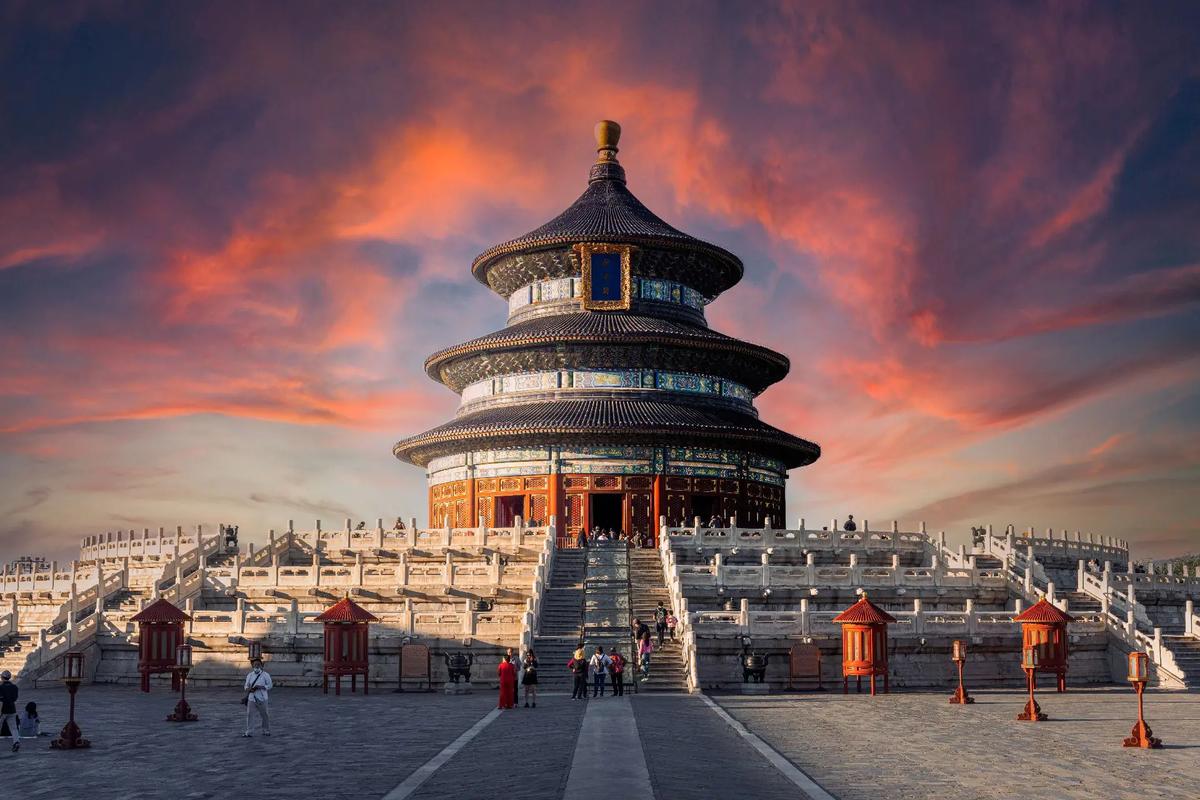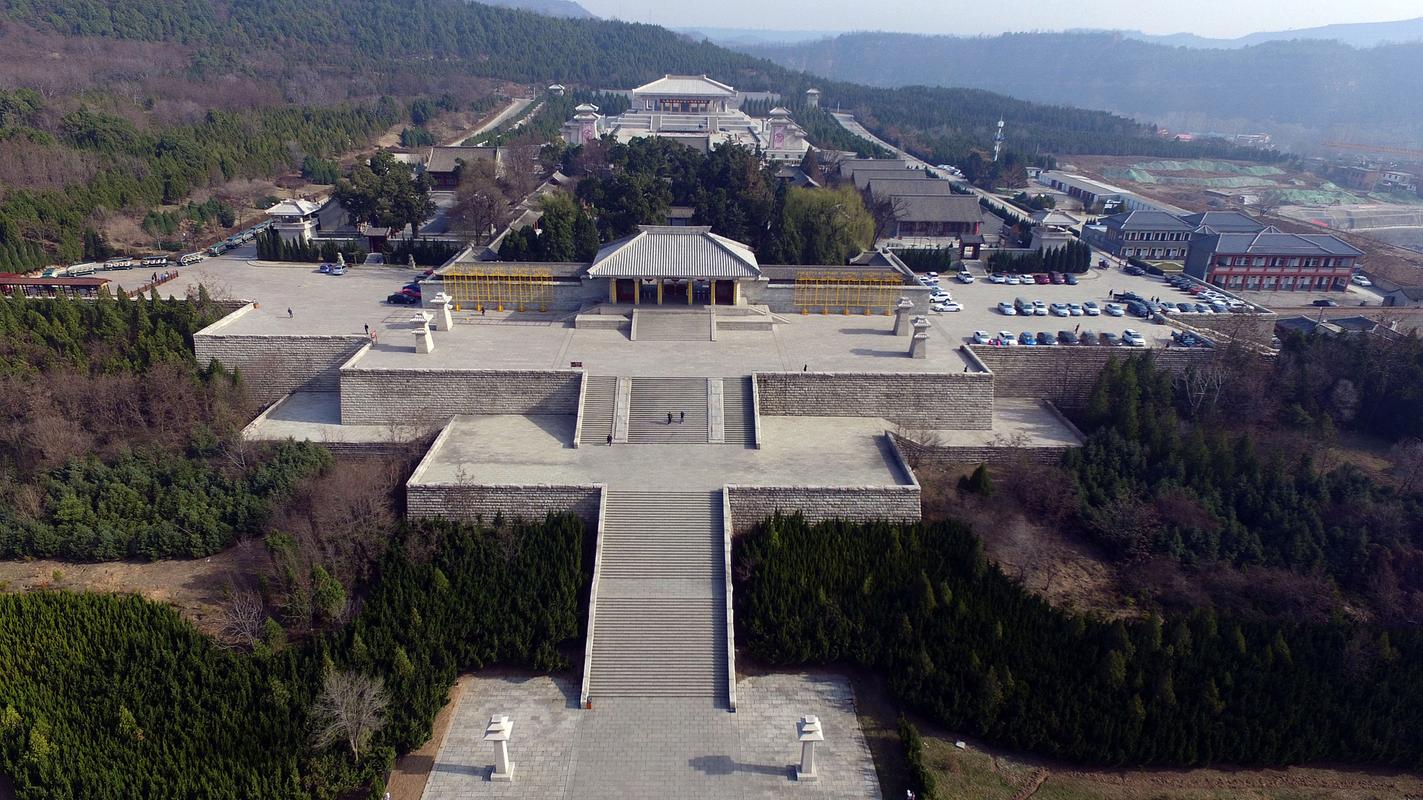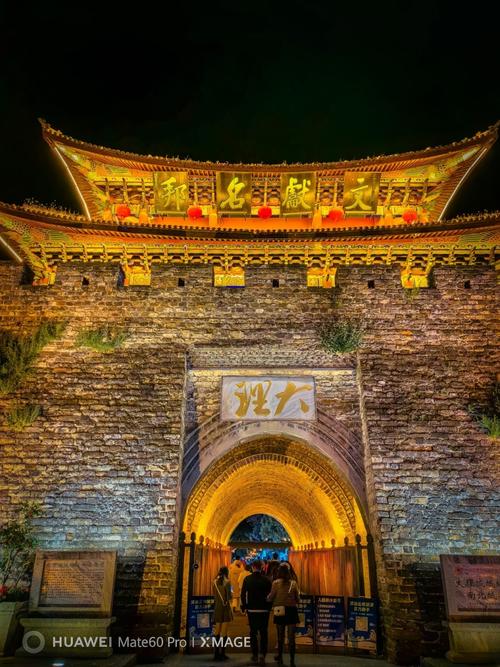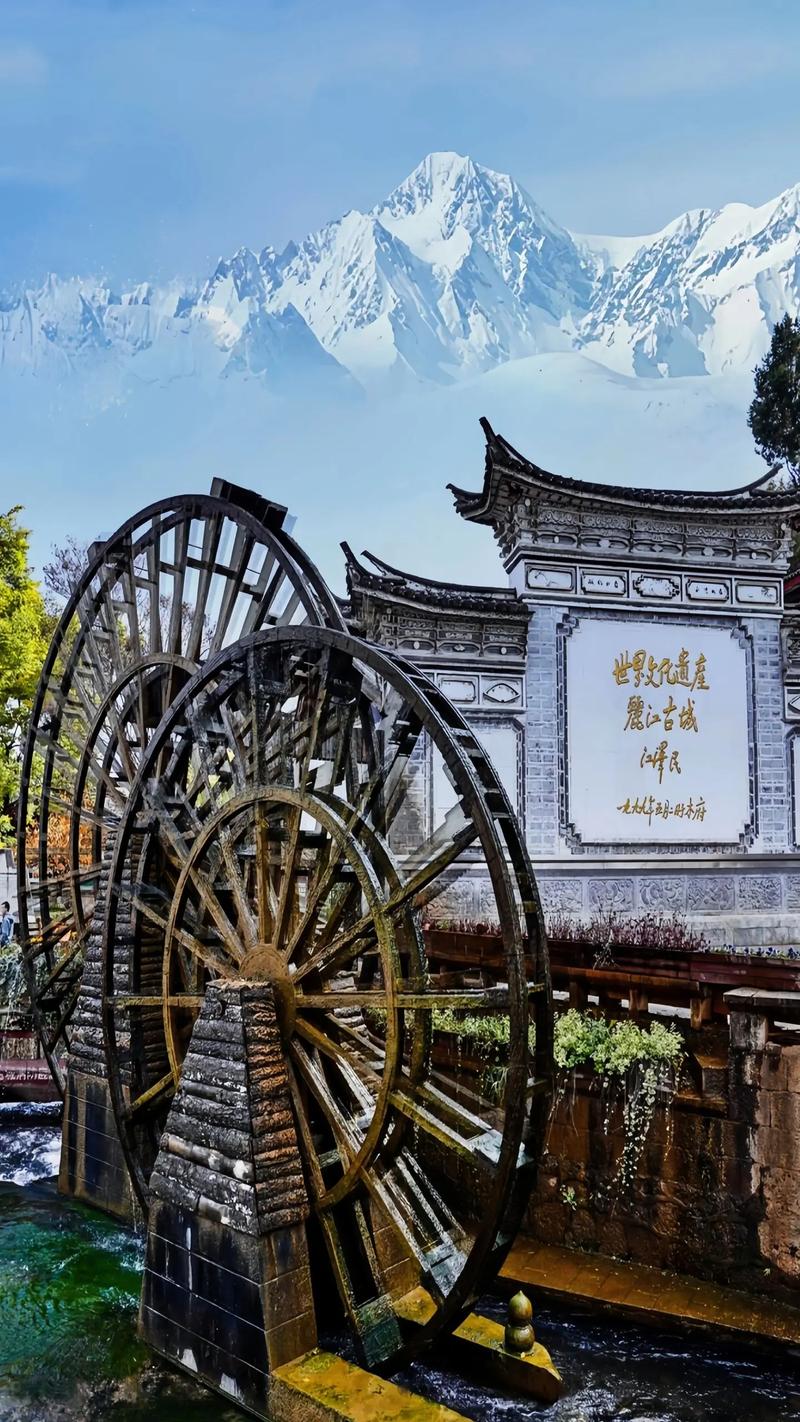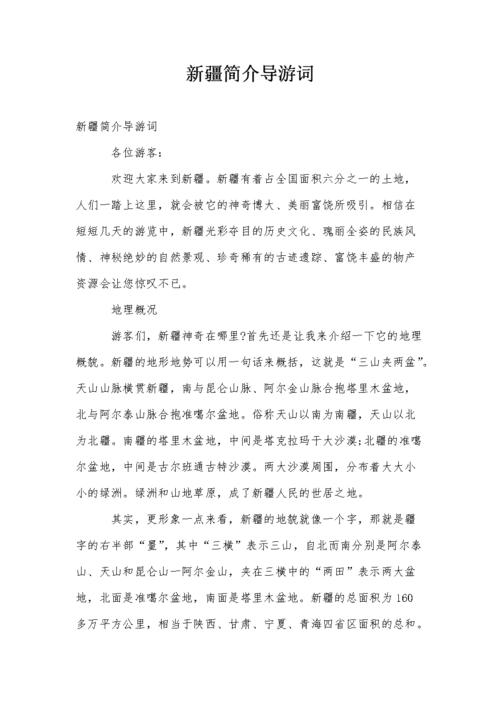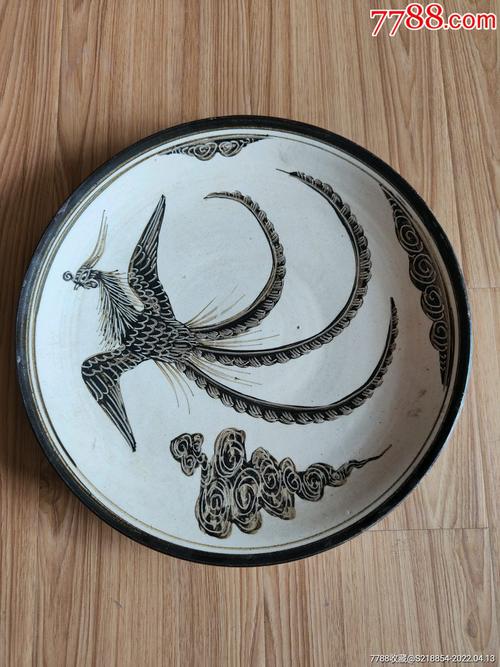
磁器口导游词(通用7篇)
磁器口导游词 篇1
Ciqikou Ancient Town is located on the Bank of Jialing River in ShapingbaDistrict, Chongqing City, with Jialing River in the East, Shapingba in thesouth, tongjiaqiao in the west, Shijingpo in the north and 3km away from themain urban area. Ciqikou Ancient Town has a unique landform of "one river, twostreams, three mountains and four streets". Ma'anshan is one of them, with Jinbimountain on the left, Fenghuang mountain on the right and three mountains in thedistance. Fenghuang River and Qingshui river run together, and Jialing Riverruns from north to north, forming a good natural lane.
Come to Ciqikou Ancient Town, the bustling land and water wharf of thatyear, step on the Qingshiban Road, taste the local food and snacks, and find ateahouse to enjoy the local customs of old Chongqing. Because it is very closeto the urban area, today's ancient town is also a good place for people'sleisure and entertainment.
There are more than ten streets in the ancient town, with Ming and Qingstyle buildings on both sides. Of course, everything in front of tourists hasbeen renovated in recent years. However, this does not affect your feeling of"old Chongqing" here. The ancient town is not big. There is no problem walkingaround according to the signs.
Zhongjiayuan and TONGJiAYUAN are typical mountain dwellings in EastSichuan, which are worth seeing. The Baolun temple in the town, with a historyof 1000 years, can offer incense and blessing. There are many teahouses on thestreet. You can find one. Sailors and uncle paoge all like to go in and outhere. While drinking tea, I have the opportunity to enjoy the local folk arts,such as Sichuan Opera, Sichuan Qingyin, etc.
There are many local delicacies and snacks in the ancient town. Maoxuewang,qianzhangpi and pepper and salt peanuts are the "three delicacies" in the town.More famous is "Chen Mahua". There are many "Chen Mahua" stores in the town.Which one is the most authentic? You can see which store has the longestqueue.
The ancient town is not far from the baigongguan and zhazidong in Geleshan.You can visit them together.
hot tip
1. In the "cross street" of the ancient town, there is a special PostcardMuseum: Miss Suyan, you can send postcards here to your future self.
2. Ciqikou is the nearest ancient town to the main urban area of Chongqing.The passenger flow during holidays is very large, and there will be crowdedpeople. It is recommended to go to Ciqikou by shifting the peak.
磁器口导游词 篇2
千年古镇,重庆缩影。位于重庆市沙坪坝区嘉陵江畔的古镇磁器口,辖区1.8万人,面积1.5平方公里,距繁华的主城区仅3公里,是不可多得、古色古香的传统文化历史街区,是人文荟萃、风景优美、独有“一江两溪三山四街”地貌的旅游胜地,是交通便利、休闲娱乐、重温老重庆旧梦的好去处。
磁器口始建于宋真宗咸平年间(公元998年),因明朝建文帝朱允?杀苣言?隐修于镇上宝轮寺,故又名龙隐镇。清朝初年,因盛产和转运瓷器,而得名磁器口,作为嘉陵江边重要的水陆码头,曾经“白日里千人拱手,入夜后万盏明灯”,繁盛一时,美誉为“小重庆”。 磁器口历史文化底蕴丰厚,是重庆历史文化名城极其重要的组成部分。
巴渝文化、宗教文化、沙磁文化、红岩文化、民俗文化各具特色:有古朴粗犷的巴渝遗风,有古风犹存的茶馆、有历史传承的码头文化;有佛、道、儒三教并存的九宫十八庙;有正气凛然的红岩志士抗战遗址;有独具特色的川剧清唱、火龙表演,有工艺独特、品种繁多的传统旅游产品,有享誉四方的毛血旺、千张皮、椒盐花生等饮食三宝,任你品味,任你选购。
“一条石板路,千年磁器口”,其鲜明的民族和地域特色显示出旺盛的生命力和强大的吸引力,海内外每年前来参观、旅游的宾客达300余万人次。
磁器口“三多”
古镇磁器口,从老人们的叙谈中得知,古镇昔有“三多”:庙宇多、名人足迹多、茶馆多。
庙宇多
在磁器口,几乎所有的人都知道“九宫十八庙”之说,宝轮寺、云顶寺、复元寺、文昌宫……不一而足。在小巷穿行,只要发现残墙断垣,向居民打听,准会得到这样的答复:“这里原来是个庙子。”昔日,在这里香会、庙会、花会,以及正月龙灯、清明风筝、端午龙舟、七月河灯、中秋赏月、重阳登高等,一年到头从不间断。在老百姓中流行着这样一句话:“初一十五庙门开,烧香拜佛请进来。”现在得以保存下来且较完好的只有“宝轮寺”,“宝轮寺”建于唐初,大雄宝殿正梁上刻有“尉迟恭建修”字样。寺地范围较大,由大雄宝殿,至马鞍山,一直到童家桥,都是宝轮寺范围,到处都修建有神殿庙宇,气势恢弘。有僧侣300多人,香火旺盛。此寺毁于明末清初,张献忠入川时,把庙宇几乎烧尽,仅存大雄宝殿。后经培修川主殿、观音阁、天王殿及禅房。
大雄宝殿的殿柱是约两人合抱的马桑树,其余殿宇的柱子直径不过一尺大小。而大雄宝殿的建筑内外结构未用一颗铁钉,且是全木结构。殿中两桩刻有盘龙抱柱,栩栩如生。最奇的是两柱基石,一柱凸出地面尺许,一柱凹下几寸,但两柱平衡,历时千年之久,全殿无歪斜之影,真可谓天工巧匠,堪称一绝。大雄宝殿佛爷座像前一井,可通嘉陵江河边的“九石缸”,曾有人以鸭投入井内,事后在“九石缸”发现。此井在平时用石鼓盖上的。
最使这千年古镇增色不少的是,有不少的名人来过磁器口古镇,不少已成为老人们回忆的佳话。传说明朝初年朱元璋之孙允炆皇帝被四叔燕王朱棣篡位,削发为僧来重庆,隐避于宝轮寺,天王殿墙上有“龙隐禅院”四个大字。故将原“白岩镇”改名为“龙隐镇”。龙隐镇方圆三十余华里,上至井口,下至李子坝为界。
名人足迹多
到20世纪初四川总督刘湘到磁器口,开办了炼钢厂、机修厂,成为四川最早的炼钢基地。
在抗日战争时期省立教育学院在磁器口办学时,学贯中西的国学大师吴宓在这里任教,除传道授业、著书立说之外,偶尔也会到镇中心的茶馆去坐坐,一边品茶,一边与茶客摆摆“龙门阵”,了解民情与社会。著名的诺贝尔物理学奖获得者,美籍华人丁肇中,在抗战时期就曾就读磁器口正街宝善宫内的嘉陵小学。磁器口凤凰山作为国民政府教育部美术委员会驻地,聚集了徐悲鸿、傅抱石、王临乙、张书族、丰子恺、宗白华等众多的全国知名的美术家及美学家。《红岩》小说中的“华子良”,更是家喻户晓,在磁器口留下了他革命活动的足迹。据老人们讲,华子良经常到镇上买菜,担盐巴,挑酱油,买完东西就走,老辈人都见过,而且与地下党接头的地点便在磁器口的一栋穿斗房子里,只是说不清是那一栋了,这更增添了古镇神秘色彩。
茶馆多
在古镇磁器口最有特色的一景是茶馆。昔日在这千年古镇,随处可见茶馆。当年的水手、袍哥大爷、闲杂人等都喜爱出入此间,茶馆成了龙蛇混杂之地。在陪都期间,这一个小镇茶馆达100多个。其特色是“书场茶馆”,又称艺人茶馆,是品茗欣赏民间艺术的地方。书场茶馆戏曲品种不少:有川剧坐唱(打围鼓)、四川清音、四川竹琴(扬琴)、荷叶清唱更普遍是说书茶馆。坐茶馆的人络绎不绝,座无虚席。卖报的报童:‘卖报,卖报”的喊声不绝于耳。姑娘和大嫂们:“卖瓜子,南瓜子,葵瓜子,卖花生,磁器口的盐花生!”叫卖声清脆响亮。特别是晚上能在茶馆登台说书的人,都是上品的高手,所以人们称之为“品仙台”,都是挂牌说书,看谁有绝技高招,谁能争取更多的茶客,谁就能得到“红包”。哪一位说书人讲得好、茶馆的生意必定会更加兴隆、老板自然高兴,说书人得的红包就越厚实。直到如今,茶馆仍是磁器口一景,百来米长的老街便有13家茶馆,家家茶客满座,古风犹存。
磁器口景点
翰林院
翰林旧居“一门三举子,五里两翰林”,磁器口翰林院原为鲤鱼石学舍,清末又孙氏以价在此办学授课。其后人在此读书,考中三个举人。另又学生黄钟音、段大章中进士等,授翰林院编修。因此,磁器口的翰林院是当时读书人向往之地。房屋现保存中院,内庭有小拜月台,是当年主人举行家庭祭的地方。
巴渝民居馆
展馆浓缩古镇建筑的精髓,穿越时空的阻隔,走进追忆的长廊,感受木、石、砖的建构,围合的空间,宁静的院落。锺家院钟家大院是慈禧太后管家钟云亭所建,距今有120xx年历史。该院子兼具北方四合院与南方四合院的特色。
宝轮寺
宝轮寺明朝建文帝避难时曾在此隐居,故宝轮寺又名龙隐寺,磁器口旧称龙隐镇,现存寺内“大雄宝殿”四个苍劲有力的汤金大字,是我国佛教协会主席赵朴初所题。该殿为明代建筑,距今已有600多年历史。整个大殿金碧辉煌,没有一颗铁钉,堪称我国建筑艺术之瑰宝。多年来,宝轮寺暮鼓晨钟,香火不断,每逢春节庙会,从四面八方涌来的善男信女络绎不绝。在这里烧几柱香,许个心愿,保全家平安。
文昌宫
文昌宫磁器口辖区是九宫十八庙的圣地。香火最旺的庙子数宝轮寺,道观中最热闹的就是文昌宫。磁器口民谣:歌乐灵音寺,龙隐凤凰台,渠涪文昌水,石马桂花香。
深水井
深水井是古镇保存完好的明代古迹之一,相传明建文帝辗转流落到磁器口时,为躲避官府追捕,曾于枯井中藏身,饥渴难耐之时,井中突生甘泉,饮后饥渴顿消,脱险后到磁器口的宝轮寺出家隐居。故乡人们称其为“生水井”、“僧水井”。后误为“深水井”,世代相沿流传至今。
宝善寺
宝善寺的大门不在道观轴线正中,而偏向东南,面向嘉陵江,暗合道家水火相克之意。民国时期辟为嘉陵小学丁肇中在此读了3年小学。宝善宫内可参观陶瓷博物馆,了解制陶全过程,还可以参观丁肇中纪念室。
少妇尿童
少妇尿童塑像,童子JJ不断有自来水流出。相传明建文帝朱允文避难来磁器口宝轮寺时,仙人托梦让他童子尿治好了他的病。
汪逆跪像
汪逆跪像为纪念抗战阵亡的将士而塑的大卖国贼汪精卫、陈璧君夫妇的跪像。
磁器口导游词 篇3
Dear tourist friends, you are now in the ancient town of cizikou. It islocated in the suburb of Chongqing City, with Jialing River in the East,Shapingba in the south, tongjiaqiao in the West and Shijingpo in the north,covering an area of 1. It covers an area of 18 square kilometers and is namedafter the porcelain produced and transported in Ming and Qing Dynasties.
This ancient town has a long history. It was originally known as Longyintown. It is said that Zhu Yunwen, the grandson of the Ming Emperor ZhuYuanzhang, lived in seclusion. When Zhu Yunwen first ascended the throne, he wasusurped by his fourth uncle Zhu Di, the king of Yan. He cut his hair to become amonk and came to Chongqing to hide in the town's Baolun temple, so the town wasrenamed "Longyin town". In 1918, the local gentry raised funds to establish the"Shu porcelain factory" here. Due to the adoption of new technology, theporcelain was of good quality, with a wide variety and a growing reputation. Theproducts were exported to both inside and outside the province. Gradually, thename of "Ciqikou" replaced "Longyin town".
The ancient town has a profound cultural origin. It has gathered Guo Moruo,Xu Beihong, Feng Zikai, Ba Jin, Bing Xin and other cultural celebrities. Mr.Ding Zhaozhong, a famous Chinese American scientist, also studied in the town.The town's tea house culture is prosperous, large and small teahouses can beseen everywhere, sailors, uncle paoge and other people like to come and go here.During the period of accompanying capital, there were more than 100 teahouses inthe town, and storytelling became the characteristic of teahouses. Up to now,the teahouse is still a scene of Ciqikou. There are 13 teahouses in the oldstreet which is more than 100 meters long. Every teahouse is full, and theancient style still exists. Maoxuewang, Qianzhang soft stew and pepper and saltpeanuts are famous snacks in the ancient town. They are known as the "threetreasures" of Ciqikou diet.
The ancient town has mountains and water, fresh air, shady trees, peacefuland comfortable people's life, and retains the life style of local ethnic groupsin China. The buildings in the town have the characteristics of Eastern Sichuandwellings. The stone road is harmonious with the dwellings along the street.Most of the houses are made of bamboo and wood, and they are built with bucketwalls or semi wooden walls. Most of the shops along the street are one intothree rooms, long into deep type. Hua Ziliang, a household name in the novelHongyan, once contacted the underground party members in one of the oldhouses.
In 1998, Ciqikou Ancient Town was designated by the State Council as a keyprotected historic district in Chongqing. The ancient town is now open towelcome Chinese and foreign guests.
磁器口导游词 篇4
来到重庆的第一天下午,我和妈妈就去磁器口逛街。我本来以为是里边有许多瓷器,可是去了才知道不是“瓷”而是“磁”。这是嘉陵江边的一个渡口古镇,里边全是古色古香的建筑,一条条弯弯曲曲、窄窄的巷子里,小商店错落有致地分布在两旁,每个商店都挂着古典的招牌,特别显眼。巷子里人山人海,十分拥挤。对于喜欢购物的妈妈来说,这可满足了她的需求。
我们走进了一家珠宝店,妈妈看上了一条银项链,戴上一试正合适,经过几番讲价,终于买了下来。走着走着,又看到一家玩具店,我赶紧进去,看上了一只“愤怒的小鸟”玩偶,里面装的是压缩泡沫,摸起来手感很好,在迪士尼,一个要卖100多块钱呢,而这里只要25块钱,真是物美价廉,妈妈很快给我买了一个。我还在“幸运草专卖店”里挑选了一对四叶草项链。听说,在一些三叶草里找到一株四叶草可只有万分之一的几率呢!我戴着买来的四叶草项链,开心极了,希望它能给我带来好运。
巷子里还有好多美味小吃呢!买麻花的人排起了长长的队,卖麻花的忙得不可开交。打糍粑的人抡着大捶子,卖糕点、卖香脆辣椒的,在忙着现场制作…… 这一次,我们终于找到了正宗的印度飞饼,厨师是一位皮肤有点黑的印度人。我们点了一份香蕉飞饼、一份刨冰,片刻后,飞饼做好,散发出一种诱人的香味,嚼起来甘甜甘甜,十分柔软,我们一边品尝着飞饼,一边吃着冰凉可口的刨冰,爽口极了。后来,我们又品尝了羊肉串、凉皮、抄手等特色小吃,填饱了肚子,我们又继续前进。
我们从中午一直逛到天黑,逛得脚发软,才依依不舍的离开了。磁器口真是一个繁华、精致、快乐而又神秘的小古镇啊!
磁器口导游词 篇5
Hello everyone, welcome to Chongqing, the capital of mountains and rivers.I'm Luo __, the tour guide of Chongqing. You can call me Xiao Luo or LuoDao.
Chongqing is located in Southwest China, the upper reaches of the YangtzeRiver, the eastern edge of Sichuan Basin, Hubei and Hunan in the East, Guizhouin the south, Sichuan in the West and Shaanxi in the north. Chongqing is 470kilometers long from east to west and 450 kilometers wide from north to south,with a total area of 82400 square kilometers. It is the largest city in Chinawith a population of 29.45 million. Chongqing has built its capital three timesin history. It is also a famous mountain city, water city, bridge city and hotspring city. As for Chongqing, there are Daba Mountain in the north, Wushanmountain in the East, Wuling Mountain and Dalou mountain in the southeast. Thealtitude difference is huge and undulating. It can be said that there is a cityin the mountains and a mountain in the city. It is a mountain city worthy of thename. At the same time, in the Chongqing section of the main stream of theYangtze River, there are hundreds of small rivers such as Jialing River, QujiangRiver, Fujiang River, Wujiang River and Daning River, together with ChangshouLake, Xiaonanhai lake, Qinglong lake and other lakes, making the annual averagetotal water resources of Chongqing about 500 billion cubic meters. The waterarea per square meter ranks first in China. Therefore, the mountain city ofChongqing stands in the water and is a city of mountains and waters.
A thousand year old town, epitome of Chongqing. Dear tourist friends, weare now at Ciqikou, an ancient town with thousands of years of vicissitudes.Ciqikou, an ancient town with an area of 1.18 square kilometers, is located inthe outskirts of the city. It was named after the rich production andtransportation of porcelain in the Ming and Qing Dynasties. Ciqikou has a goodreputation. Do you know what it is?
In fact, according to historical records, Xingzhen began from the Xianpingperiod of emperor Zhenzong of Song Dynasty to the formation of a commercialwharf with land and water converging in the Ming Dynasty, and reached its peakin the late Qing Dynasty and the Republic of China. The ancients praised theprosperity of "thousands of people bow their hands in the daytime and thousandsof bright lights in the night", so it has the reputation of "little Chongqing".Ciqikou was formerly known as Longyin town. It is said that in the early MingDynasty, Emperor Yunwen, the sun of Zhu Yuanzhang, was usurped by his fourthuncle Zhu Di, and then he came to Chongqing as a monk to hide in Baolun temple.There are four words "Longyin Temple" on the wall of Tianwang hall, so theoriginal "Baiyan town" is changed to "Longyin town". In 1918, the local gentryraised funds to establish the "Shu porcelain factory". The porcelain has a goodgeology, a wide variety, a growing reputation, and its products are exported toboth inside and outside the province. Gradually, the name "Ciqikou" replaced"Longyin town".
When I come to Ciqikou, I have to say that its teahouse culture. In thepast, teahouses could be seen everywhere in this millennium old town. In thosedays, sailors, uncle paoge and other people loved to go in and out of thispiece. During the period of accompanying capital, there were more than 100teahouses in this small town, which was characterized by "bookstores teahouse",also known as artists teahouse. It was a place for tea tasting and appreciationof folk art. Especially in the evening, people who can talk on the stage in theteahouse are all top-quality experts, so people call it "pinxiantai".Storytellers are all listed storytellers, to see who has unique skills, who canattract more tea guests, who can get the red envelope. Until now, the teahouseis still a scene of Ciqikou. There are 13 teahouses on the old street over 100meters long. Every teahouse is full, and the ancient style still exists.
Maoxuewang, a famous snack, is known as the "three treasures" of Ciqikou.The buildings in the town have the characteristics of Eastern Sichuan dwellings.The stone road and the dwellings along the street are in harmony. The houses aremore than bamboo and wood structures, with carved beams and painted buildings,decorated windows and coffins. A lane, a family, if you are not careful, youstand on the history of 3000 years. You can feel this feeling everywhere inCiqikou, so Ciqikou is a real living ancient town, which is the famous "a stoneroad, Millennium Ciqikou".
In 1998, Ciqikou was designated as a key protected historic district by theState Council of Chongqing. The government has planned to build Ciqikou into anew tourism district with Bayu cultural characteristics. The ancient town hasopened its doors to welcome visitors from all over the world.
磁器口导游词 篇6
磁器口最早的名字叫白岩场,始于(998—1020xx年)宋真宗咸平年间,因为这里曾有一座白岩寺而得名。
明建文四年,建文帝朱允炆被其四叔朱棣篡位,逃出皇宫后削发为僧。当他流落到巴渝一带时,曾在白岩山上的宝轮寺隐匿长达四五年。世人知情后,就以皇帝真龙天子曾经隐居在此的事实而将宝轮寺改名为龙隐寺,白岩场也被改称为龙隐镇。
清朝初年,瓷器在很长一段时间里成为龙隐镇的主要产业。,瓷器本地商绅集资在镇中青草坡创建了新工艺制瓷的“蜀瓷厂”,远销蜀外。后来随着工艺进步,瓷器品种增多,名气也扩大了起来。龙隐镇里,瓷器业最发达时有70多家。
民国时期,重庆成为陪都,因为水运方便,龙隐镇成为嘉陵江中上游各个州、县和沿江支流的农副土特产的集散之地,城里的一些大商贩干在磁器口开设分店收购货物,输出以棉纱、布匹、煤油、盐糖、洋广杂货、日用百货、五金颜料、土碗土纸和特产烟丝等为大宗。据统计磁器口每天有300多艘(船均载重10吨)货船进出码头,有商号、货栈和各种作坊达1670多家,摊贩760多户。每天都有300多艘(船均载重10吨)货船进出码头。码头河坝中搭建起临时街道,有上河街、中河街、下河街。还有专业性的木竹街、铁货街、陶瓷街和猪市、米市,各有一地,各为其市。这些商人渐渐为龙隐镇改口,叫成了瓷器口,缘由是这样更贴切、顺口。后来,因为“瓷”字与“磁”相通,又被叫成磁器口。磁器口的商贸集中在大码头和靠码头的金蓉正街,除大码头外,还有历史悠久的4家丝厂,一家制呢厂,24兵工厂(现特钢厂),25兵工厂(现嘉陵厂),都设有自己的货运码头。码头上从早到晚,水陆两路,商旅川流不息,装卸搬运,络绎不绝。行商坐商,批零量购,货畅其流。大码头右侧的豆芽湾,是米粮帮、木材帮、篾货帮、煤炭帮的地盘。与码头河街相邻的是铁货街、猪市、鸡鸭蛋市和盐市口。各行业的同业公会都有事务所,食品糕点业26家,棉纱布业20家,茶馆酒馆116家。
解放以后,磁器口繁华依旧,码头上从早到晚,过往商旅川流不息,被誉为”小重庆“。当年流传一首民谣:“白日里千人拱手,入夜后万盏明灯。”“千人拱手是形容每天都来上千只船上的船公划着船向码头停靠。”“万盏明灯”是指形容码头上商贾云集,入夜后各自点亮油壶、电石灯、汽灯,经江水一漾,亮光炅炅,如星辰闪烁。
1958年,码头移至汉渝路,磁器口过去水陆码头的集散地和中转站的作用,逐渐消失。为了保存这片蕴藏丰厚历史和文化的遗迹,政府采取培修和恢复明清建筑风格进行开发,将磁器口古镇建设成为了民俗文化街区景点。1997年,重庆新发行的一套《最后的回忆》地方磁卡,与解放碑、通远门、临江门并列的就是磁器口大码头。
传说明朝初年朱元璋之孙允炆皇帝被四叔燕王朱棣篡位,削发为僧来重庆,隐避于宝轮寺,天王殿墙上有“龙隐禅院”四个大字。故将原“白岩镇”改名为“龙隐镇”。龙隐镇方圆三十余华里,上至井口,下至李子坝为界。
到20世纪初四川总督刘湘到磁器口,开办了炼钢厂、机修厂,成为四川最早的炼钢基地。
在抗日战争时期省立教育学院在磁器口办学时,学贯中西的国学大师吴宓在这里任教,除传道授业、著书立说之外,偶尔也会到镇中心的茶馆去坐坐,一边品茶,一边与茶客摆摆“龙门阵”,了解民情与社会。
诺贝尔物理学奖获得者丁肇中,在抗战时期就曾就读磁器口正街宝善宫内的嘉陵小学。
磁器口凤凰山作为国民政府教育部美术委员会驻地,聚集了徐悲鸿、傅抱石、王临乙、张书族、丰子恺、宗白华等众多的美术家及美学家。
《红岩》小说中的“华子良”,更是家喻户晓,在磁器口留下了他革命活动的足迹。据老人们讲,华子良经常到镇上买菜,担盐巴,挑酱油,买完东西就走,老辈人都见过,而且与地下党接头的地点便在磁器口的一栋穿逗房子里,只是说不清是那一栋了,这更增添了古镇神秘色彩。
磁器口导游词 篇7
Hello, everyone. Welcome to Chongqing, the capital of mountains and rivers.I'm Luo __, the tour guide of Chongqing. You can call me Xiao Luo or LuoDao.
Chongqing is located in Southwest China, the upper reaches of the YangtzeRiver, the eastern edge of Sichuan Basin, Hubei and Hunan in the East, Guizhouin the south, Sichuan in the West and Shaanxi in the north. Chongqing is 470kilometers long from east to west and 450 kilometers wide from north to south,with a total area of 8. 240000 square kilometers, the largest city in China,with a population of 29.45 million. Chongqing has built its capital three timesin history. It is also a famous mountain city, water city, bridge city and hotspring city. As for Chongqing, there are Daba Mountain in the north, Wushanmountain in the East, Wuling Mountain and Dalou mountain in the southeast. Thealtitude difference is huge and undulating. It can be said that there is a cityin the mountains and a mountain in the city. It is a mountain city worthy of thename. At the same time, in the Chongqing section of the main stream of theYangtze River, there are hundreds of small rivers such as Jialing River, QujiangRiver, Fujiang River, Wujiang River and Daning River, together with ChangshouLake, Xiaonanhai lake, Qinglong lake and other lakes, making the annual averagetotal water resources of Chongqing about 500 billion cubic meters. The waterarea per square meter ranks first in China. Therefore, the mountain city ofChongqing stands in the water and is a city of mountains and waters.
A thousand year old town, epitome of Chongqing. Dear tourist friends, weare now at Ciqikou, an ancient town with thousands of years of vicissitudes.Ciqikou Ancient Town is located in the outskirts of the city, with an area of 1.It covers an area of 18 square kilometers, and is named after the porcelainproduced and transported in Ming and Qing Dynasties. Ciqikou has a goodreputation. Do you know what it is?
In fact, according to historical records, Xingzhen began from the Xianpingperiod of emperor Zhenzong of Song Dynasty to the formation of a commercialwharf with land and water converging in the Ming Dynasty, and reached its peakin the late Qing Dynasty and the Republic of China. The ancients praised theprosperity of "thousands of people bow their hands in the daytime and thousandsof bright lights in the night", so it has the reputation of "little Chongqing".Ciqikou was formerly known as Longyin town. It is said that in the early MingDynasty, Emperor Yunwen, the sun of Zhu Yuanzhang, was usurped by his fourthuncle Zhu Di, and then he came to Chongqing as a monk to hide in Baolun temple.There are four words "Longyin Temple" on the wall of Tianwang hall, so theoriginal "Baiyan town" is changed to "Longyin town". In 1918, the local gentryraised funds to establish the "Shu porcelain factory". The porcelain has a goodgeology, a wide variety, a growing reputation, and its products are exported toboth inside and outside the province. Gradually, the name "Ciqikou" replaced"Longyin town".
When I come to Ciqikou, I have to say that its teahouse culture. In thepast, teahouses could be seen everywhere in this millennium old town. In thosedays, sailors, uncle paoge and other people loved to go in and out of thispiece. During the period of accompanying capital, there were more than 100teahouses in this small town, which was characterized by "bookstores teahouse",also known as artists teahouse. It was a place for tea tasting and appreciationof folk art. Especially in the evening, people who can talk on the stage in theteahouse are all top-quality experts, so people call it "pinxiantai".Storytellers are all listed storytellers, to see who has unique skills, who canattract more tea guests, who can get the red envelope. Until now, the teahouseis still a scene of Ciqikou. There are 13 teahouses on the old street over 100meters long. Every teahouse is full, and the ancient style still exists.
Maoxuewang, a famous snack, is known as the "three treasures" of Ciqikou.The buildings in the town have the characteristics of Eastern Sichuan dwellings.The stone road and the dwellings along the street are in harmony. The houses aremore than bamboo and wood structures, with carved beams and painted buildings,decorated windows and coffins. A lane, a family, if you are not careful, youstand on the history of 3000 years. You can feel this feeling everywhere inCiqikou, so Ciqikou is a real living ancient town, which is the famous "a stoneroad, Millennium Ciqikou".
In 1998, Ciqikou was designated as a key protected historic district by theState Council of Chongqing. The government has planned to build Ciqikou into anew tourism district with Bayu cultural characteristics. The ancient town hasopened its doors to welcome visitors from all over the world.

